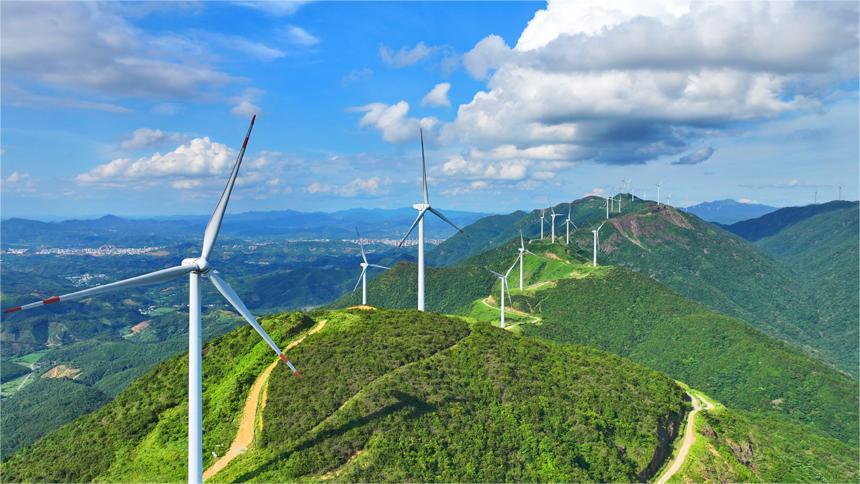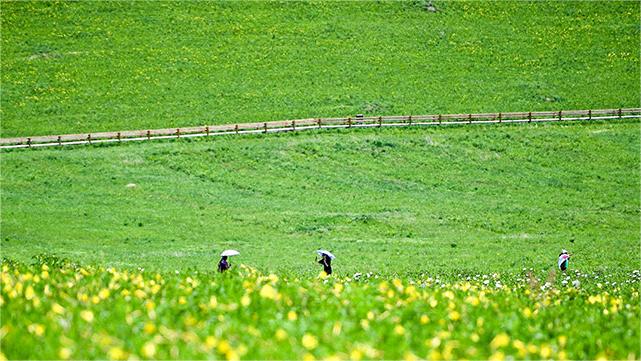Blue sea-like PV panels in Gobi Desert mirror China's story of green development
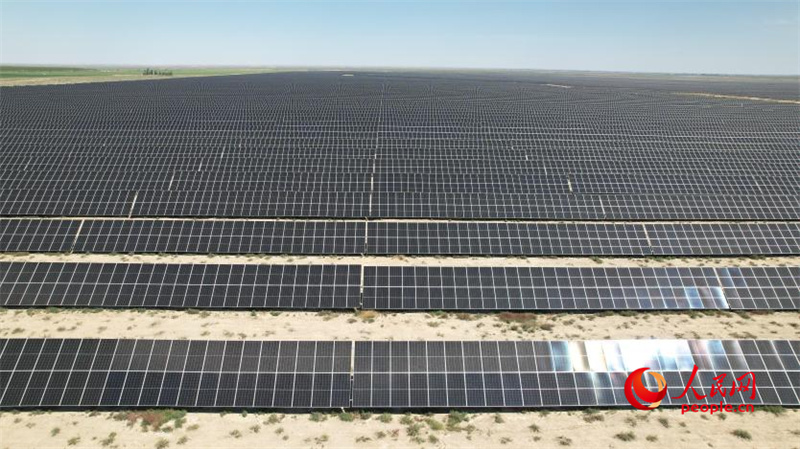
Solar panels stretching across the vast Gobi Desert form a spectacular "blue sea" in northwest China's Xinjiang Uygur Autonomous Region. (People's Daily Online/Li Xinyang)
Nestled in the northern foothills of the Tianshan Mountains, over 800 meters above sea level in northwest China's Xinjiang Uygur Autonomous Region, an awe-inspiring sight unfolds: a vast expanse of 1.2 million solar panels stretches across the Gobi Desert, forming a spectacular "blue sea" that harnesses the region's abundant sunlight.
This is the photovoltaic (PV) power station operated by PowerChina Renewable Energy Co., Ltd., a subsidiary of Power Construction Corporation of China (PowerChina), in Fukang city, Changji Hui Autonomous Prefecture, Xinjiang.
Solar energy is converted into green electricity at the project and transmitted to factories, companies and households in Xinjiang and beyond.
Adjacent to the solar array, a "super power bank" consisting of 216 battery units can store 600,000 kilowatt-hours (kWh) of electricity. The energy storage system helps balance the power grid by "charging" during low-demand periods and "discharging" during peak hours.
The PV power generation project feeds more than 1.2 billion kWh of electricity into the power grid on an annual basis, which can theoretically satisfy the power consumption demands of Fukang's entire population of 180,000 for seven years, according to Peng Wenchun, general manager of the Xinjiang branch of PowerChina Renewable Energy Co., Ltd.
With an annual industrial output value of about 280 million yuan ($38.57 million), the PV power generation project of PowerChina Renewable Energy Co., Ltd. can help save 366,600 tonnes of standard coal annually.
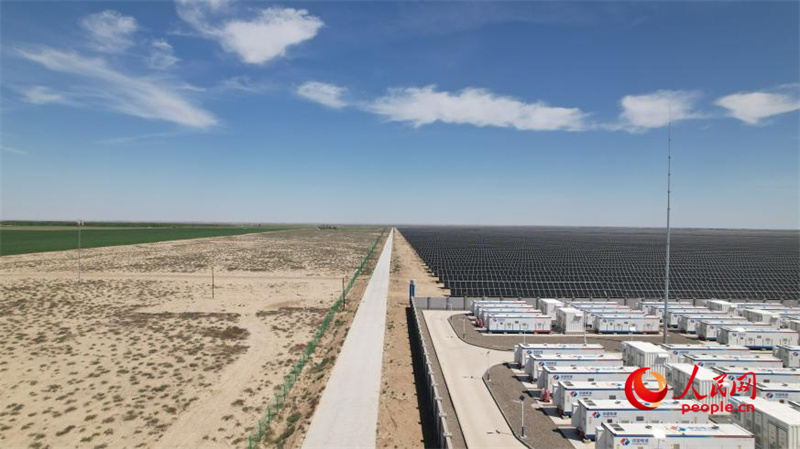
Photo shows a photovoltaic (PV) power generation project operated by PowerChina Renewable Energy Co., Ltd., a subsidiary of Power Construction Corporation of China (Power China), in Fukang city, northwest China's Xinjiang Uygur Autonomous Region. (People's Daily Online/Li Xinyang)
The annual amount of carbon dioxide emissions reduced by the project is equivalent to planting 4,800 trees – a significant contribution to China's carbon peaking and neutrality goals.
The power station employs 26 young staff members, who are responsible for such tasks as safety inspections and maintenance. These young professionals, with an average age of 27 years old, may spend two decades of their lives at the remote desert area, as solar cables last about 20 years.
Despite the isolation, they've created a vibrant community. After work, they play board games, enjoy cycling, and play badminton. They've even adopted a stray dog that has since had eight puppies.
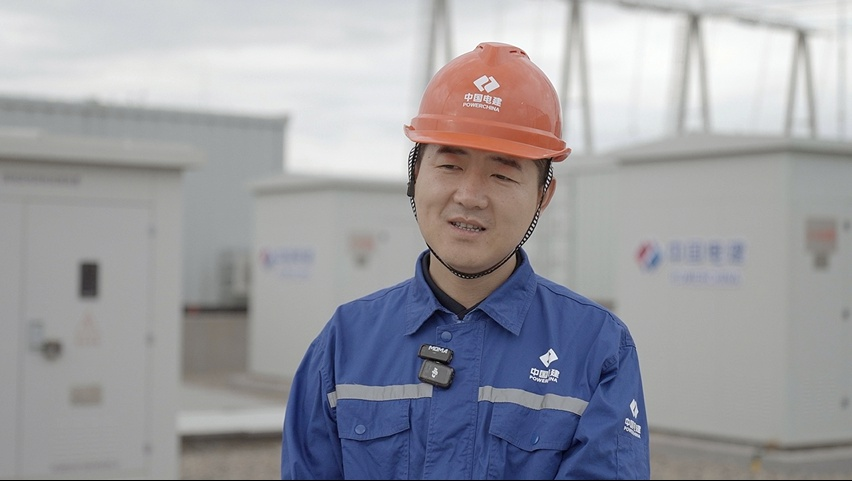
Guo Dawei, deputy head of a photovoltaic (PV) power station in Fukang city, northwest China's Xinjiang Uygur Autonomous Region, gives an interview to People's Daily Online. (Video snapshot by He Wei)
"I've been here for six months and will stay for 20 years. I'm proud to be a part of the team safeguarding this power station," said Guo Dawei, deputy head of the PV power station in Fukang.
The project is an epitome of China's burgeoning renewable energy sector. In 2023, the country accounted for over half of the world's 510 million kilowatts of newly installed renewable energy capacity.
The rapid development of the country's green industries is attributed to technological innovations, institutional reforms, and people's hard work and dedication.
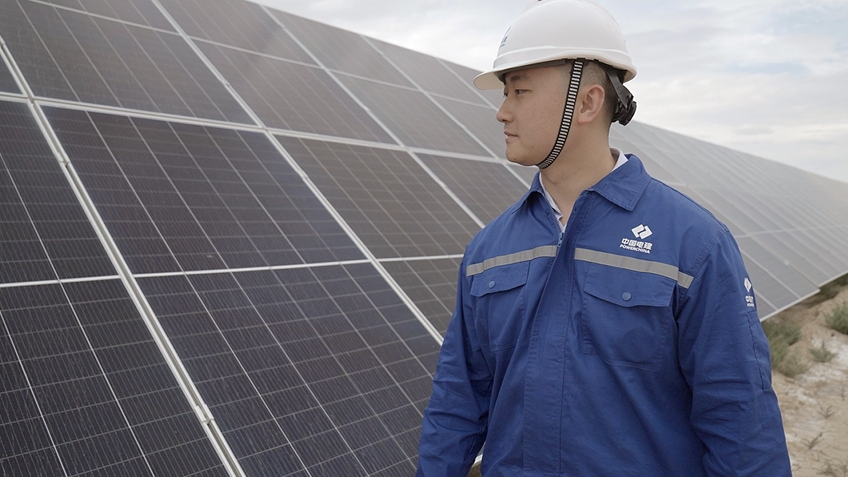
Wu Junchu, manager in charge of the construction of a photovoltaic (PV) power station in Fukang city, northwest China's Xinjiang Uygur Autonomous Region. (Video snapshot by He Wei)
The local government taps into the city's resources for industrial development, and leverages industrial strength to drive the city's comprehensive development, continuously attracting investment in the new energy industry, explained Guo Linjuan, vice mayor of Fukang city.
Since the beginning of China's 14th Five-Year Plan period (2021-2025), Fukang has designated 3.6 million mu (240,000 hectares) of contiguous unused land and natural grassland for PV industry development, and offered streamlined administrative procedures for investors, with dedicated personnel to facilitate project approvals, according to a reliable source.
Photos
Related Stories
Copyright © 2024 People's Daily Online. All Rights Reserved.






